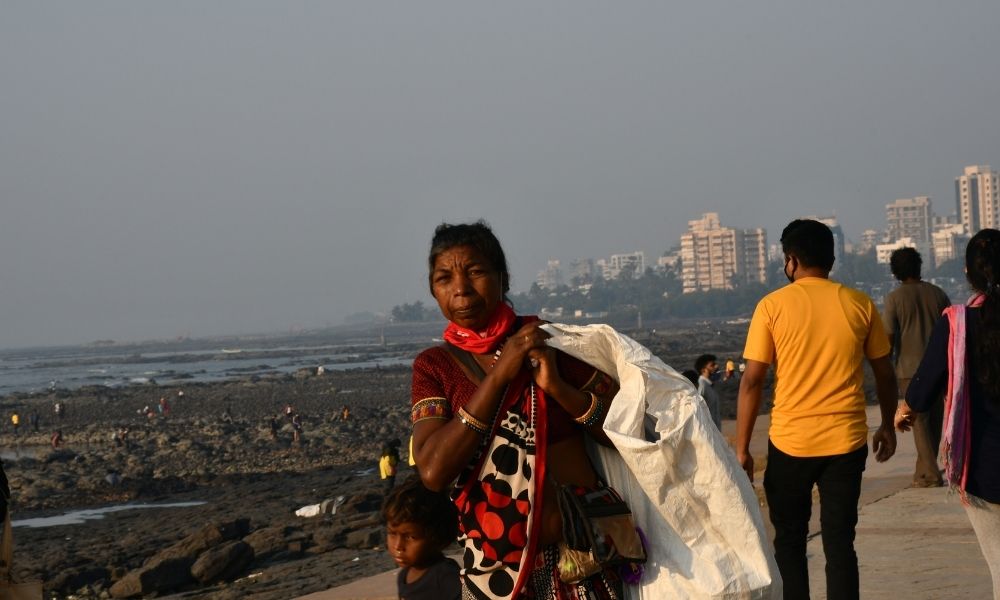
Credits: Ratika Rana
The Widening Gender Gap In India: A Cause Of Concern
India, 30 Jun 2021 1:23 PM GMT | Updated 30 Jun 2021 1:25 PM GMT
Editor : Madhusree Goswami |
A mountain girl trying to make it big in the city. She loves to travel and explore and hence keen on doing on-ground stories. Giving the crux of the matter through her editing skills is her way to pay back the journalism its due credit.
Creatives : Ratika Rana
Her primary objective is to inform, promote, educate and cultivate readers through writing.
A report by the World Economic Forum shows that India slipped 28 positions to rank 140 out of 156 countries in the gender gap index. The country is one of the worst performers in South Asia lagging behind even countries like Bangladesh, Nepal and Bhutan.
Article 16 of the Indian Constitution states that equal opportunity will be provided for all citizens in office employment under the state. However, the reality is different. In India, unfortunately, women's participation in the workforce in India has not been rising over the last few decades. A report by the World Bank said that India is one of those countries where less than a quarter of women have joined the labour force and only one-fifth are employed.
Shocking Statistics
India dropped 28 positions to rank 140 out of 156 countries in the gender gap index, reported by the World Economic Forum. The world's largest democracy is one of the worst performers in South Asia, falling behind even countries likeBangladesh, Nepal, Bhutan, Sri Lanka and Myanmar. The South Asian region is incidentally one of the worst-performing regions globally, followed by only Arab countries and the North African region. The countries with the most significant gender gaps in economic participation include Iran, India, Pakistan, Syria, Yemen, Iraq, and Afghanistan.
In 2021, India had 662.90 million females in the workforce compared to 717.10 million males in 2020. The Indian Express reported that the estimated earned income of women in India is only one-fifth of men's, which puts the country among the bottom 10 globally on this indicator. Women's participation in technical and professional roles declined by 29.2 per cent, whereas female inclusion in senior and managerial positions is a mere 14.6 per cent.
Factors Involved
Gender disparity is a consequence of illiteracy, women's safety concerns in workplaces, notions of family responsibility and acceptability of women in higher positions in the jobs. A report by PEW showed that 92 per cent of Indians said that women should get an equal opportunity at workplaces. However, when further asked about their preferability of which gender should take priority in the workplace or higher education institutes, people's attitude was less gender supportive in India than in many countries across the world.
Women's participation in Parliament is one spectrum where India needs to progress urgently. In a report by Inter-Parliamentary Union, India ranked 149 out of 192 countries in women's participation in Parliaments across the globe. A stark difference can noticed when India is compared to its neighbours. As of January 2021, China stands at 86, Pakistan stands at 116, Bangladesh at 111 and Afghanistan at 71.
Way Out
The coronavirus pandemmic has inevitably affected the graph of women's participation in the workforce negatively. About 10 million people lost their jobs in May this year, according to the Centre for Monitoring Indian Economy. Of those who lost their jobs, women professionals have been particularly affected. McKinsey estimates that female job loss rates have been about 1.8 times higher than for males globally.
Awareness of the importance of education for all genders, inclusive participation in leadership and administration, equal remuneration for equal work and promotions based on capabilities can help India improve its stand on gender representation globally.
Also Read: Prostitution Racket Busted In Noida; Police Arrest 16 Men, 12 Women
 All section
All section














